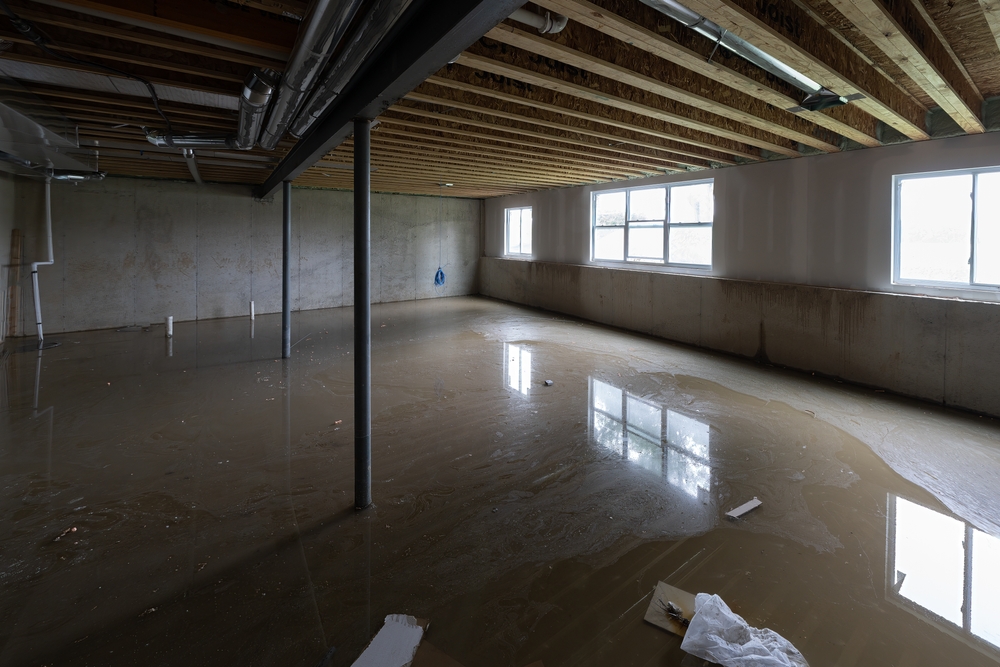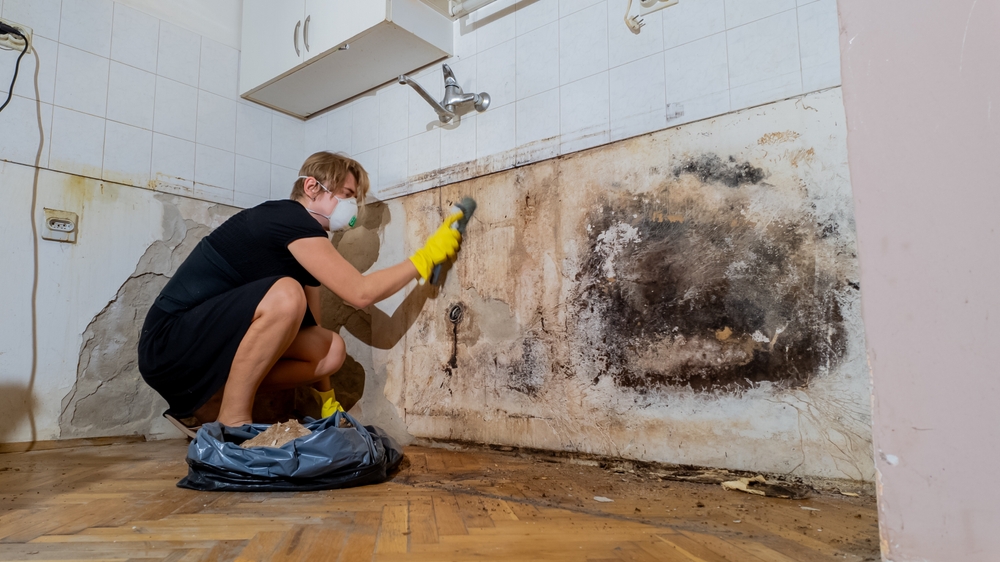Water damage looms big when hurricane season starts. All of which can cause major water damage to your house: a large storm can bring heavy rainfall, storm surges, and strong winds that create flooding and roof leaks. Ahead of time preparation is crucial for homeowners in hurricane-prone regions to safeguard their property and ensure the safety of their family. This manual offers doable, methodical instructions on reducing water damage prior, during, and following a hurricane. Early action will help you to lower repair expenses, stop mold development, and guarantee that your house will survive the storm.
Introduction
Imagine hearing the roar of a hurricane knowing that strong winds and heavy rain are on their way. You know that a roof leak or a sudden burst pipe from the storm can flood your house. If not under control, water damage can destroy flooring, walls, and personal items as well as cause harmful mold infests. With hurricanes, every second matters. Now-day home preparation will help you keep your family safe and prevent later, expensive repairs.
This article will explain why water damage important, how it occurs during hurricanes, and how you could help to reduce its consequences. We will discuss important pre-storm preparations, what to do during a hurricane watch or warning, and what to do following a storm. Even if you’re new to storm readiness, let’s start with doable advice.

Understanding Hurricane-Related Water Damage
Hurricanes can produce several types of water damage. Here’s what you should know:
-
Flooding:
Storm surges and heavy rain can overwhelm drainage systems, flooding basements and low-lying areas. Flooding can find its way into your flooring and walls, seriously damaging them and promoting mold development. -
Roof Leaks:
High winds and strong rain can drive water through damaged or absent shingles, resulting in leaks in your attic and ceilings. Over time, even modest roof leaks can cause significant water damage. -
Window and Door Breaches:
Storm winds can break seals around windows and doors, letting water flood the inside of your house. Water leaks from broken windows and doors compromise the flooring and walls around. -
Sewer Backups:
Overwhelmed sewage systems can back up into your house during a hurricane. Sewer backups expose health hazards and raise repair costs by bringing contaminated water into your living quarters. -
Appliance Malfunctions:
High winds or power surges during a storm can damage appliances including dishwashers and washing machines, so causing unplanned water leaks.
Water damage can cause structural degradation, mold infestations, damage to personal property, and possibly health risks. Acting before a cyclone strikes is essential since, unlike restoration, prevention is always more affordable and successful.
Pre-Season Preparations
Minizing water damage depends on your house being ready before the hurricane season begins. Use these practical guidelines:
A. Roof Inspection and Maintenance
- Inspect Your Roof:
Search for missing or broken tiles and shingles. Search for any cracks or openings where water might find entrance. - Seal and Reinforce:
Strengthen weak areas of your roof as needed to guarantee it can resist strong winds and heavy rain. - Professional Help:
Strengthen weak areas of your roof as needed to guarantee it can resist strong winds and heavy rain.
B. Gutter and Downspout Cleaning
- Clear Debris:
Sort leaves, twigs, and other trash from your gutters and downspout. Clogged gutters can cause foundation and roof damage as well as water overflow. - Ensure Proper Drainage:
Check that your downspouts send water away from the foundation of your house. Splash blocks or extensions will assist direct the water farther away. - Gutter Guards:
Install gutter guards to guarantee effective water flow and help to control trash accumulation.
C. Window and Door Protection
- Install Hurricane Shutters or Plywood Covers:
Hurricanes can produce several types of water damage. Here’s what you should know: - Seal Gaps and Cracks:
Hurricanes can produce several types of water damage. Here’s what you should know: - Reinforce Garage Doors:
Strong, safe garage doors help stop water from seeping into your house through often weak spots.
D. Foundation Check and Protection
- Inspect for Cracks:
Look for any fractures or holes in your foundation that would let water soak in. - Seal Openings:
Repair any wall or foundation cracks with the suitable sealants. - Proper Grading:
Make sure the ground around your house slopes away from the foundation to reduce water buildup.
E. Drainage and Landscaping
- Maintain Proper Drainage:
See sure every outdoor drainage system is operating as it should. Make sure water runs away from your house. - Trim Overhanging Trees and Shrubs:
Remove branches and foliage from trim overhanging trees and shrubs that can compromise windows or your roof during a storm. - Create a Swale:
Think about landscaping changes such as building a swale to help to move water away from your house.
F. Sump Pump Installation and Maintenance
- Install a Sump Pump:
Install a sump pump in your basement or crawl space to drain water should flooding strike. - Regular Testing:
Frequent sump pump testing guarantees that it is in good operating order. - Backup Power:
Think about a battery backup solution for your sump pump so it runs even during power outages.
G. Creating an Emergency Kit
- Essential Supplies:
Get ready with an emergency pack including water, nonperishable food, a first-aid kit, flashlights, batteries, and portable chargers. - Protection Materials:
To assist safeguard sensitive locations, add sandbags, duct tape, and plastic sheeting. - Important Documents:
Store important papers including home inventory, insurance policies, and other documentation in a waterproof container.
By following these pre-season guidelines, you can lower your chance of mold infestations down later on and help shield your house from possible water damage.

Preparations During a Hurricane Watch/Warning
Once a hurricane watch or warning is issued, you should act fast to protect your house.
A. Securing Outdoor Items
- Bring in Outdoor Furniture:
Move barbecues, patio chairs, and other outside gear inside. This keeps them from being blown about and damaging anything. - Secure Loose Objects:
In high winds, tie down or store any unsecured objects that might fly.
B. Protecting Valuables
- Elevate Important Items:
Sort emotional or precious objects to higher ground in a safe room away from possible water. - Cover Furniture and Electronics:
Cover objects that cannot be moved with plastic sheets or tarps to guard against water splashing.
C. Preparing for Potential Flooding
- Elevate Appliances:
To reduce water contact, if at all feasible raise furniture and appliances off the floor. - Sandbags:
To help keep water out, set sandbags at low windows, entrances, or other vulnerable access points. - Secure Documents:
Get valuables and vital papers and relocate them to a dry, safe place.
D. Shutting Off Utilities
- Know Your Shut-Offs:
Learn how switch off your house’s water, gas, and electricity. This can stop more harm. - Follow Authorities’ Advice:
Local officials should suggest turning off utilities; follow their direction right away.
E. Evacuation Planning
- Know Your Evacuation Route:
In case of strong flooding, arrange many paths out of your area. - Prepare a Go-Bag:
To be ready to go at a moment’s notice, pack basics such prescriptions, clothes, and crucial paperwork. - Inform Family Members:
Make sure everyone in your house is aware of the escape route and meeting place should you have to leave your residence.
These actions protect your house and have you ready for possible water damage should a hurricane strike.
Post-Hurricane Actions
Your task isn’t done after the storm. See these guidelines to evaluate and minimize any water damage.
A. Assessing Damage Safely
- Wait for Safety:
Wait until local officials declare it safe before visiting flooded areas. Water could be erratic or polluted. - Wear Protective Gear:
Wear gloves, boots, and a mask to guard yourself from toxins when looking around your house. - Document Damage:
Photographs and videos of every impacted region are great tools. Insurance claims will benefit much from this material.
B. Dealing with Water Damage
- Remove Standing Water:
Remove as much water as you can with towels, mops, and a wet/dry vacuum. - Dry Affected Areas:
To completely dry out your house, run dehumidifiers and fans. Fast drying helps stop mold from growing. - Inspect for Hidden Moisture:
Look under flooring and behind walls for moisture. Ignorance of hidden water could cause mold.
C. Preventing Mold Growth
- Clean and Disinfect:
Disinfect all surfaces using the suitable cleaning chemicals. Sanitize places flooded by flooding. - Use Dehumidifiers:
Run dehumidifiers until you are positive the moisture has disappeared entirely. - Monitor for Mold:
Watch for any indications of mold development, including musty smells or discoloration, and take quick care of any found.
D. Contacting Insurance and Restoration Services
- File a Claim:
Report the damage to your insurance company. Send all the paperwork together with a thorough overview of the impacted locations. - Professional Assistance:
To assist with cleanup and repairs, think about calling experts like Philadelphia Restoration Services.
Following these guidelines following a hurricane guarantees minimum water damage and helps prevents additional problems including mold infestations.
Conclusion
Making your house ready for hurricane season is about safeguarding your investment and guaranteeing the safety of your family, not only about surviving the storm. Understanding the hazards of water damage and acting early, before, during, and after a hurricane will help you lower the possibility of expensive repairs and harmful mold growth.
Essential stages in safeguarding your house include routine inspections, good maintenance, and quick actions including sump pump installation, window sealing, and gutters cleaning. Should a hurricane strike, execute your emergency plan, record all damage, and, should necessary expert assistance be sought, get it.
Prepare your house immediately to act quickly. Your future self will appreciate you acting to protect your property and guarantee a safe, secure place to live.
Philadelphia Restoration Services
https://www.google.com/maps?cid=3399342399556699153
+1 267 668 0013
https://philadelphiarestorationservices.com/


